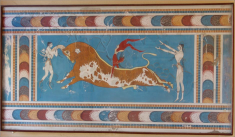Speaker
Description
The exploration of the phase diagram of strongly interacting matter is one of the most challenging fields of modern high-energy physics. The major challenge is to find diagnostic probes which are connected to chiral symmetry restoration and to the related phase transition. Very promising observables are short-lived vector mesons decaying into dilepton pairs inside the fireball. Since leptons are essentially unaffected by the passage through the high-density matter, they provide almost undistorted information on the conditions in the interior of the collision zone.
In order to reduce the systematic uncertainties of the very challenging dilepton measurements, the CBM experiment is equipped with electron and muon detectors. Electrons will be identified by a Ring Imaging Cherenkov (RICH) detector together with a Transition Radiation Detector (TRD), which are located between the Silicon Tracking System (STS) and the Time-of-Flight (TOF) detector. This setup allows the simultaneous identification of hadrons and electrons. For muon measurements, the RICH will be replaced a Muon-Chamber (MuCh) System which consists of several hadron absorbers sandwiched by GEM tracking stations. The modular setup allows the identification of muons with a high signal-to-background ratio over the full FAIR beam energy range. Although most of the hadrons will be absorbed in the MuCh, the hadrons, which penetrate the absorbers, can be identified and used for the physics analysis. First simulation results of simultaneous muon and hadron identification will be presented.
